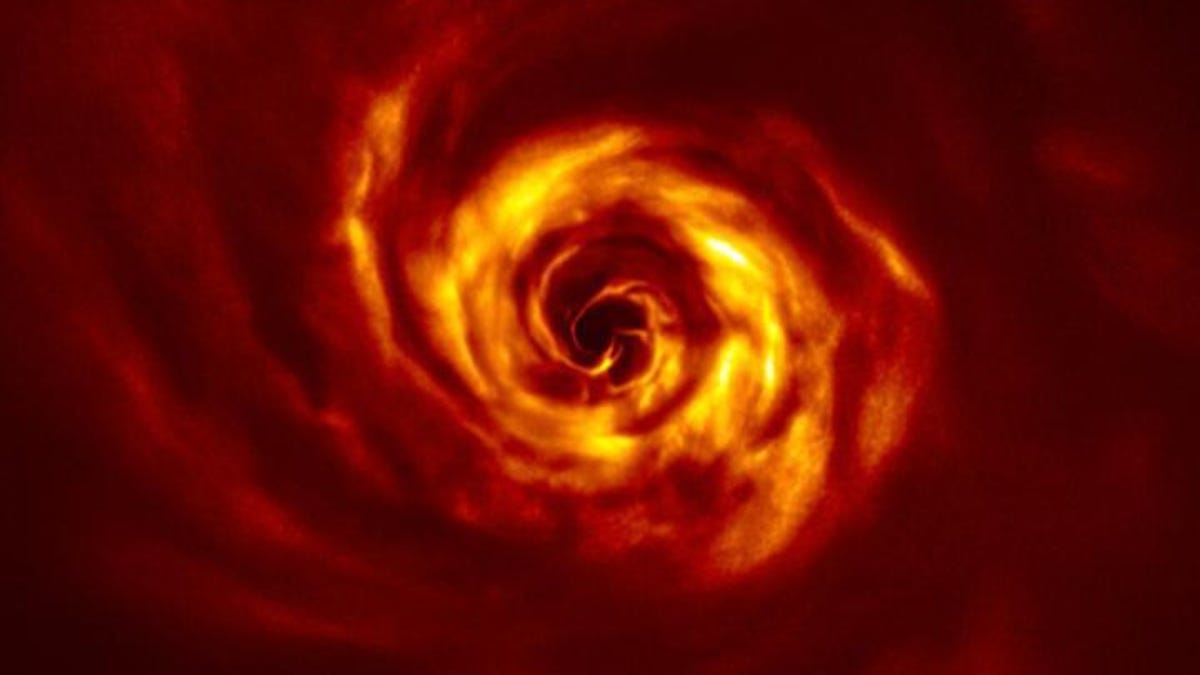Astronomers get first look at a baby planet being born
Images from the ESO's Very Large Telescope show signs of planet formation around a young star.

The twist at the center of the disc could be the location of a new planet one day.
Scientists are seeing signs that a new planet could be forming about 520 lightyears away from Earth.
Images from the European Southern Observatory's Very Large Telescope (ESO's VLT) show a "dense disc of dust and gas" near a young star named AB Aurigae. Not only that, but the disc displays a spiral structure with a twist that scientists say indicates the beginnings of a new planet. The findings were published Wednesday in the journal Astronomy & Astrophysics.
"We need to observe very young systems to really capture the moment when planets form," said Anthony Boccaletti who led the study from the Observatoire de Paris, PSL University, France in a statement. Scientists haven't been able to get photos "sharp and deep" enough until now, though.
As for the spirals and twist, Anne Dutrey, another of the paper's co-authors, explained it like this: "[The twist] corresponds to the connection of two spirals -- one winding inwards of the planet's orbit, the other expanding outwards -- which join at the planet location. They allow gas and dust from the disc to accrete onto the forming planet and make it grow."
In other words, the twist in the center of the disc is where the planet is supposed to take shape.
ESO is building another telescope, called the Extremely Large Telescope, which Boccaletti said will help get an even better look at how exactly the planet forms.
There's time, though. The paper notes that the process of forming a new planet could take a few million years.

